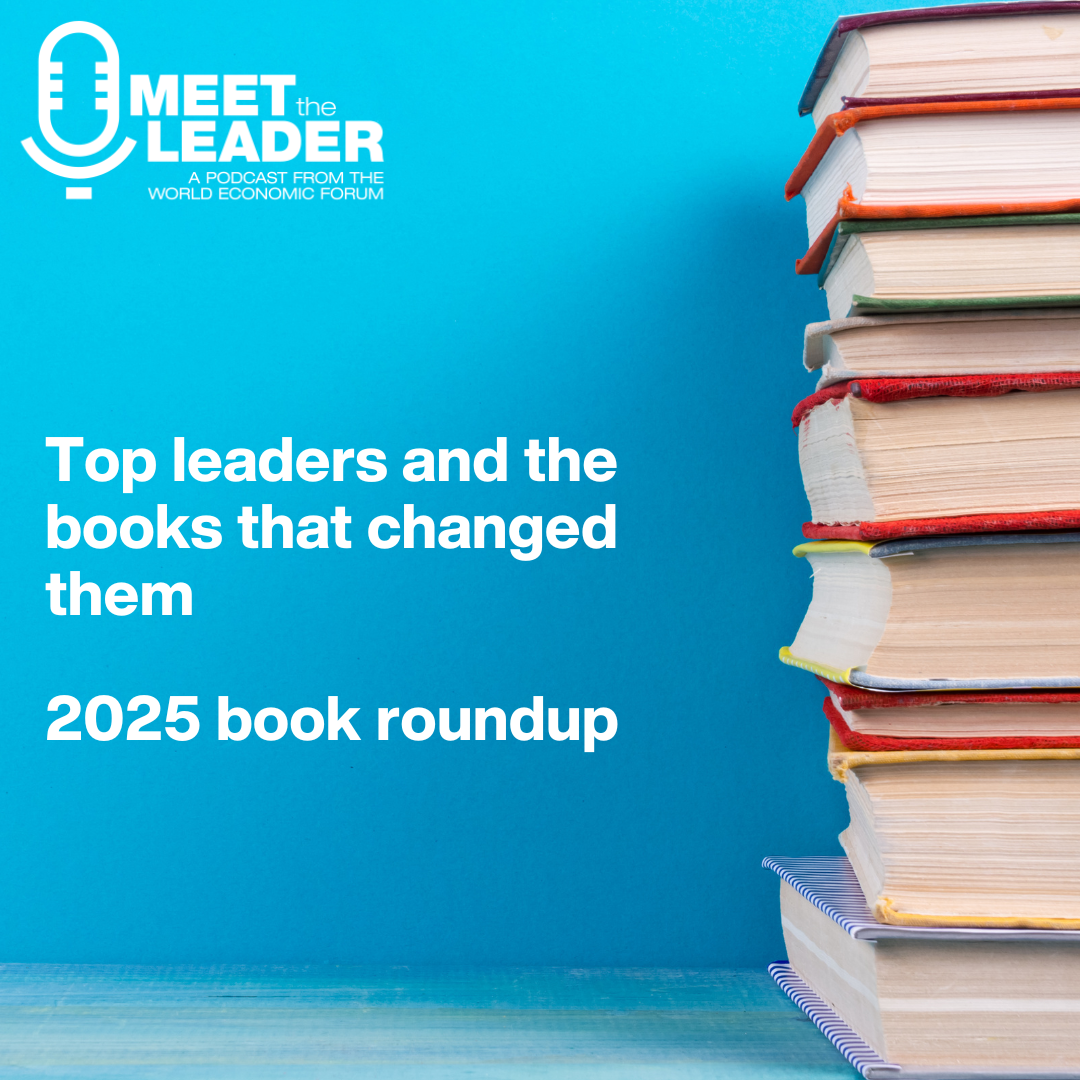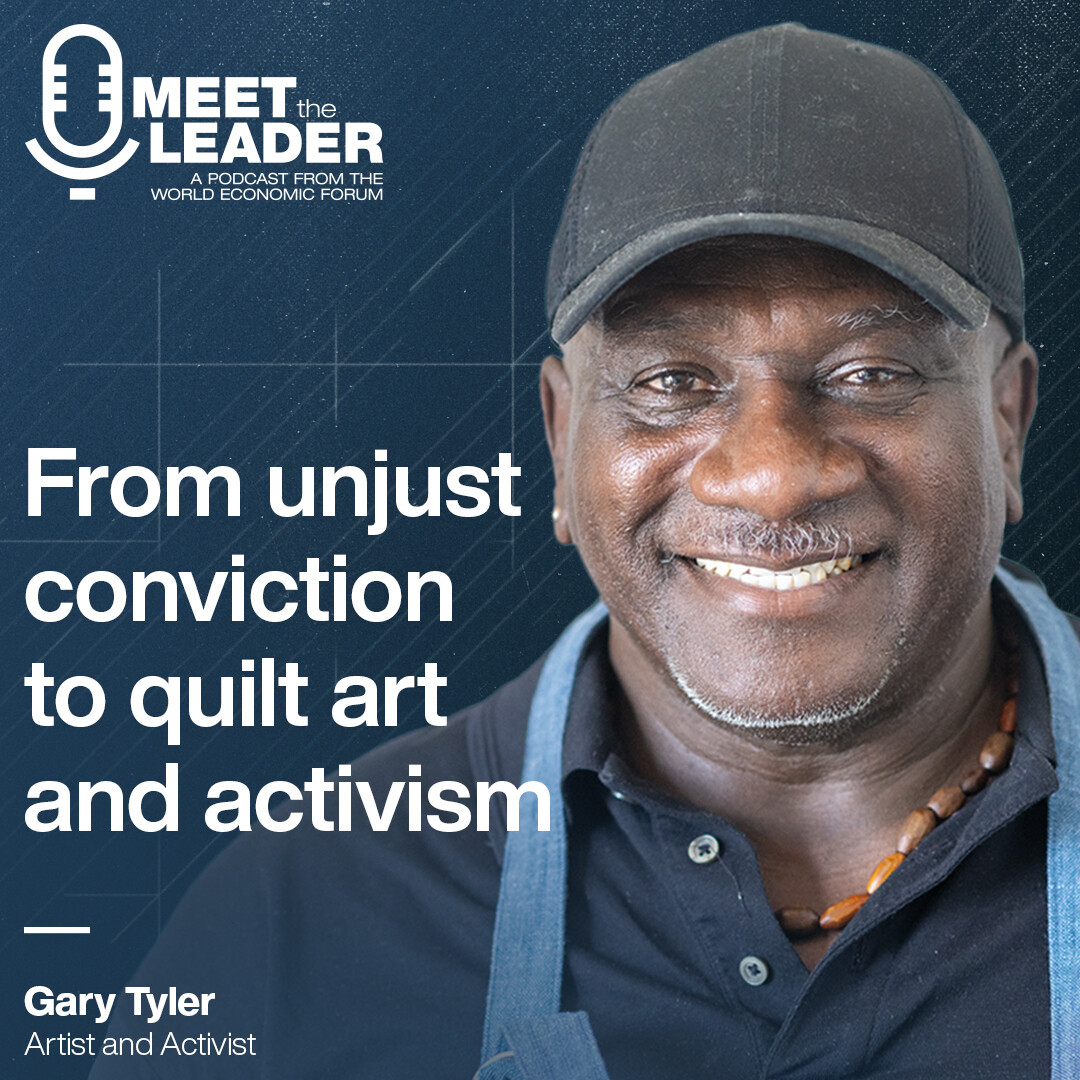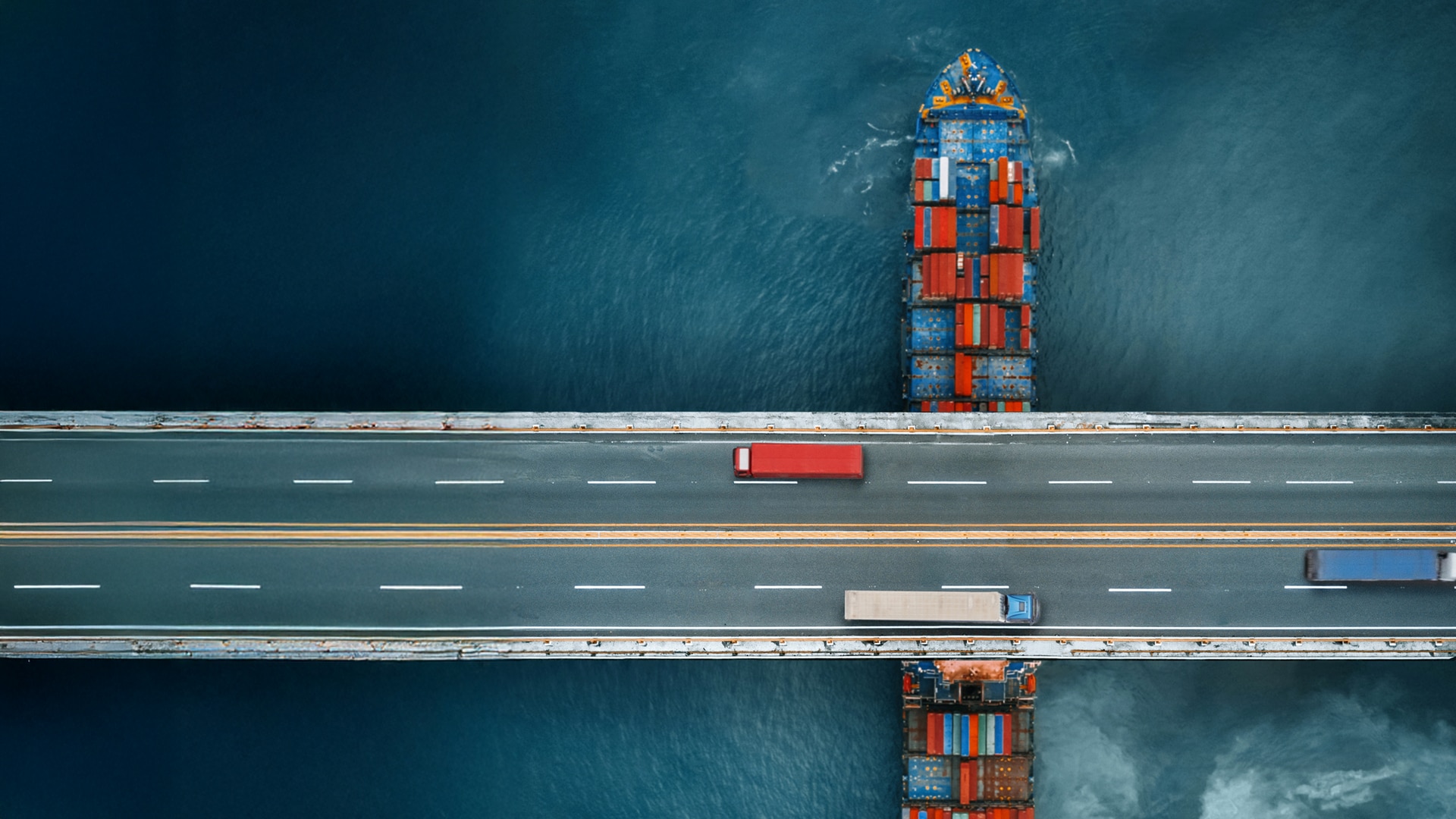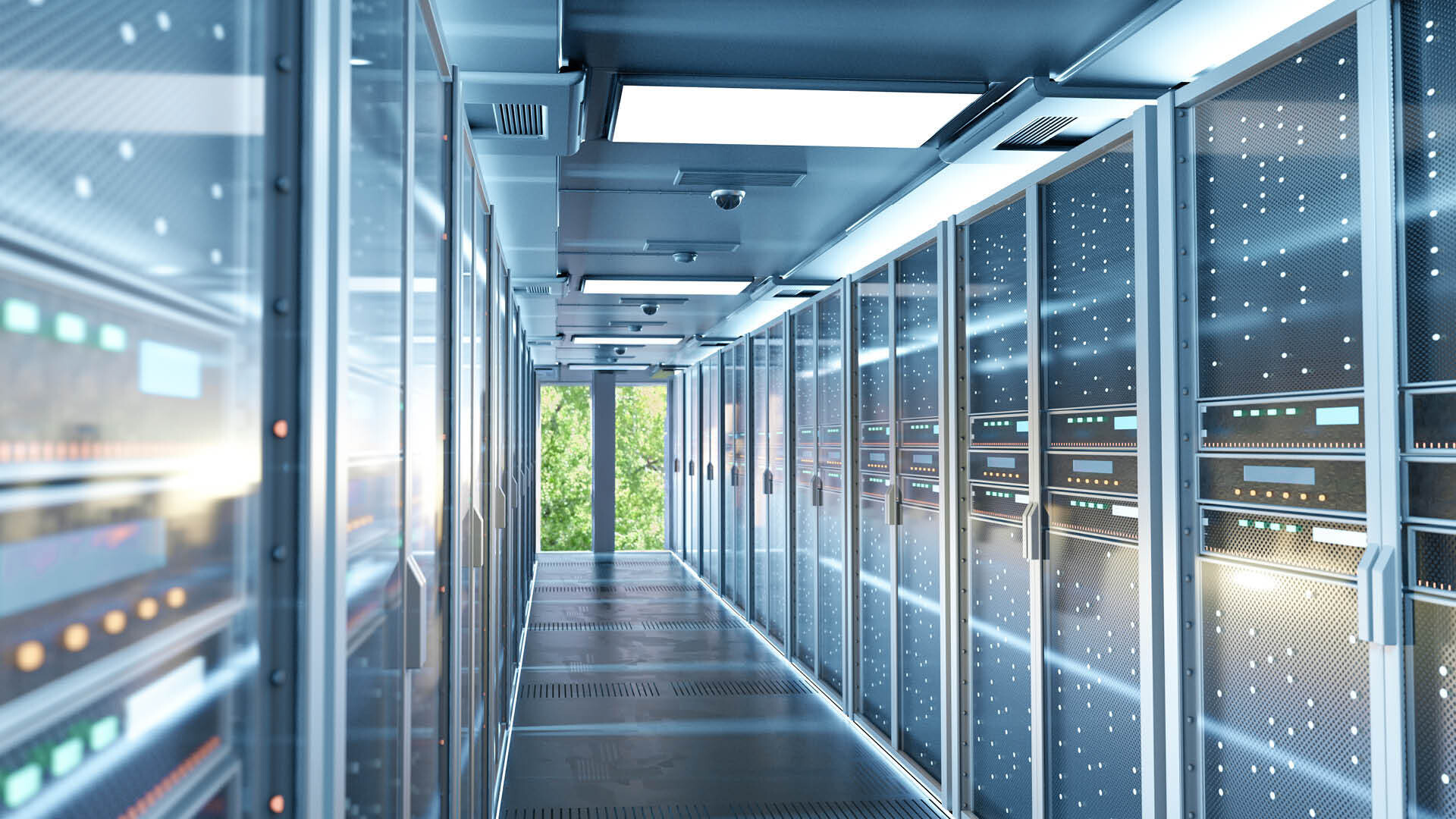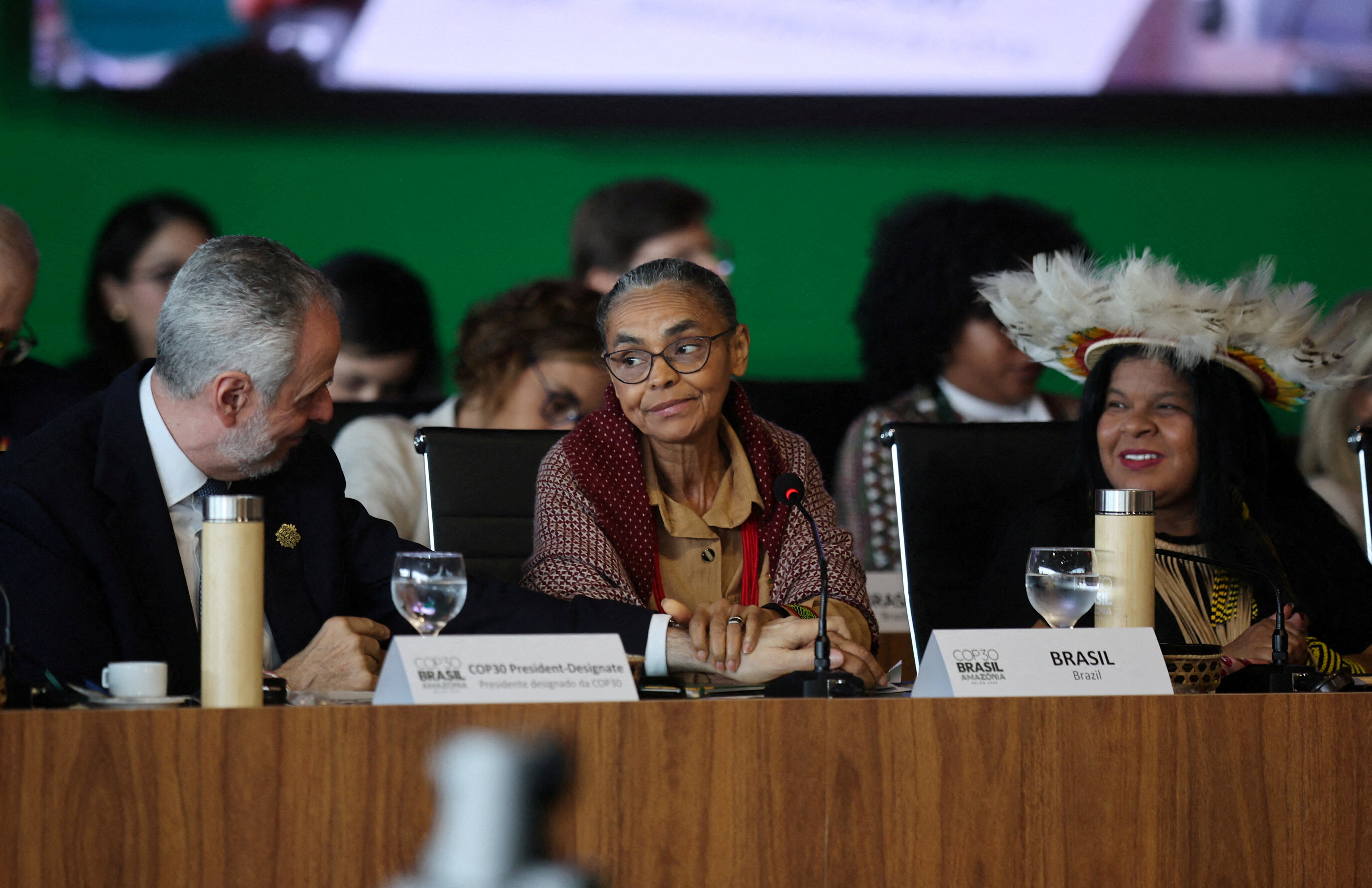An energy company is building the world's largest airplane. Here's why
播客文字稿
Mark Lundstrom, Radia The process that we've used at Radia that's probably been the most effective is making sure that we're religious about not doing anything new.
Linda Lacina, Meet The Leader Welcome to Meet the Leader, a podcast where top leaders share how they're tackling the world's toughest challenges.
In today's episode, we talk to Mark Lundstrom. He is the CEO and founder of energy company Radia. He'll tell us why he's building the world's largest plane -- and why existing technologies can help us tackle the emissions crisis.
Subscribe to Meet the Leader on Apple, Spotify and wherever you get your favorite podcasts. And don't forget to rate and review us.
I'm Linda Lacina from the World Economic Forum and this is Meet the Leader.
Mark Lundstrom, Radia I'm not necessarily motivated by creating a new law of physics. I would rather figure out how to pull together things from different industries that already exist and create some magic on the interface of those industries.
Linda Lacina, Meet The Leader It turns out we have the technologies to solve some of the world's biggest problems -- problems like decarbonization.
Technologists have been saying this for years, but Mark Lundstrom knows this better than most. He is the founder of Radia. That is a company building the world's largest airplane, all to bring offshore wind turbines onshore to to scale efficient and inexpensive renewable energy in a way that’s never been done before.
To help you picture this, These planes will be nearly as wide as a New York city block, will carry blades as tall as the Eiffel tower, and have 12 times the volume of a Boeing 747
Mark and I talked at the recent Global Technology Retreat at the World Economic Forum's San Francisco headquarters last month. He told me how using existing technologies can help teams move more quickly and solve bigger problems faster and in new ways.
He also shared how his background in aerospace engineering and entrepreneurship have helped him learn how to leverage different types of expertise. And as an energy company building an airplane, he also shared how merging disciplines can help take on big challenges.
He'll talk about all of this -- and how these planes might be used once we finally tackle decarbonization. But first I'll let him give you a closer look at Radia.
Mark Lundstrom, Radia So Radia's enabling GigaWind. So imagine offshore sized wind turbines deployed onshore. And what this enables you to do is have a path to the cheapest energy in the world, and the cheapest green energy in the world. And it's done by using basically existing technology.
And so the world knows how to make offshore scale wind turbines. They're just deployed in the ocean. And there's this opportunity to bring gigantic turbines to onshore locations where the market is 10 or 20 times bigger and be able to reduce the cost of onshore wind by about a third. And to be able to triple the acreage in the world where wind is economically viable.
And so Radia is doing this by overcoming a transportation constraint. So the only thing that standing between us and GigaWind -- offshore sized turbines onshore -- the only thing standing between us and that is having a transportation issue solved. And so today, the turbines are simply too big to get under bridges, through tunnels, around curves. And that's why blades are typically limited in the 70 metre range or so onshore, whereas offshore they're well over 100m in length -- Eiffel tower sized machines.
And so we're enabling essentially the movement of gigantic blades to onshore locations with an aircraft. So Radia is making the world's largest aircraft. It's called the WindRunner. It has the capability of moving over 100 metre blade and landing on dirt within a wind farm. And by doing this, we will be able to create the path to the cheapest energy in the world.
Linda Lacina, Meet The Leader Why is maximizing -- in particular wind power - so helpful?
Mark Lundstrom, Radia So if one reads the analyst reports about where our energy needs to come from to meet the Paris Accord goals, there's uniformity in opinion that onshore wind needs to be the biggest or one of the biggest contributors to our primary power source. So we need to figure out how to make cheaper onshore wind. And the best way to do that is to use existing, established technologies, in our opinion, and be able to redeploy those great inventions that have been made for offshore wind, redeploy that same sort of technology to onshore locations.
This aligns the interests of many different industries together. And so the turbine manufacturers want to make more larger machines for onshore wind. The wind developers want to deploy wind in more locations, more profitably. The oil and gas companies that are interested in green molecules have the opportunity to reduce the cost of their green molecules by 20% by using bigger turbines. So it really aligns the interests of many large constituencies on this path to make bigger turbines.
Linda Lacina, Meet The Leader And so is the issue that people thought that they already knew all the options on the table as far as where to place the wind turbines.
Mark Lundstrom, Radia With today's technology, it's fairly easy to understand and fairly constrained about where you can deploy. And so you merely look at the wind belt or you look at the wind resource maps. And you know where wind can be economically viable.
What the world doesn't know is that we're about ready now to be able to enable the step function from a 70 meter blade to 105 meter blade. And this will enable the doubling of the capacity of a wind turbine. Also, it allows you to triple the acreage in the world where wind is economically viable. And so there's a giant universe of new sites that can be opened up that are not currently available for wind energy.
Linda Lacina, Meet The Leader How did this idea come about? Where did it germinate from?
Mark Lundstrom, Radia About seven years ago, a couple of the largest wind turbine manufacturers in the world together issued some industry press saying that they and the industry know how to make offshoresize turbines, and they're just frustrated they can't move it to where the market is 10 or 20 times bigger.
And so Radia responded to that request, started working with both of these arch rivals on a vision for GigaWind. And that's when we started the process to develop The WindRunner, which again will be the world's largest aircraft by a lot.
Linda Lacina, Meet The Leader Getting the world's largest aircraft approved and go through its checks and boxes probably takes some doing. What was challenging about that?
Mark Lundstrom, Radia So the team has spent many years designing the aircraft, taking it through all of the computational fluid dynamics and modeling and wind tunnel testing. And so we've done all that, and we're very confident about the airplane flying. What's different about this aircraft is its size. It's 12 times bigger in volume than a 747. It's a gigantic aircraft designed to land on short pieces of dirt. And so it's very unique. But there's no new aerospace technology that's being used. So we've basically taken off-the-shelf components that are already certified and already in mass production and have designed an airplane around that. And so the schedule risk and the certification risk is quite a bit lower than most aircraft projects, because we're using things that are already flying and already certified today.

Linda Lacina, Meet The Leader And were there maybe adjustments that needed to be made to how airplanes are designed, given the size. You're dealing with a different set of challenges then maybe you would have otherwise.
Mark Lundstrom, Radia This is the first time that an aircraft has been designed to optimize on volume instead of weight. And so it's very unique in the sense that it can still move a lot of mass, 70 tons, but it has volume that's about 12 times bigger than a 747 aircraft. And so it's a gigantic vehicle that has been really designed to optimize around volume. And it's just really a it's a different engineering challenge, but nothing no new technology that's being deployed.
Linda Lacina, Meet The Leader You talked a little bit about siting and how that's so important. Explain to us, you know, why the siting is not only important just for effective energy, but also for profitability for wind farmers, so that there's an incentive to kind of keep doing this. Can you talk a little bit about that?
Mark Lundstrom, Radia Sure. So by being able to deploy larger turbines, we can triple the acreage in the world where wind is economically viable. What does that mean? That means that new land masses can be opened up, new revenue streams for new farmers. So new communities have new economic opportunities that they don't have today.
Now, it's also important because when you can increase the areas of the world where you can site turbines, you can get away from issues of transmission concerns, you can get away from issues of interconnection concerns, and you can start to deploy behind the meter much more effectively. So like onsite wind farms for data centers, for example, where we can just get off of the grid and directly connect to either data centers or a hydrogen production facility. And so being able to operate in more acres around the world gives you a lot more flexibility.
Linda Lacina, Meet The Leader And are there certain types of sites and certain traits that ideal sites share?
Mark Lundstrom, Radia So for us, we have a lot more flexibility in terms of the characteristics of a site. When you drop the average wind speed from seven metres per second, that's required today, down to five metres per second that we can enable with GigaWind, you increase the landmass in the world by a factor of three, and so you open up many, many new sites that don't exist today. Now, the specific characteristics of those sites, we have to have a portion of the site which is flat so we can land the aircraft, but basically it can be landed within the dimensionality of two turbines on the wind farm. It's easier to land in hard desert environments, for example, but as long as we're not landing in a forest, there's generally places where you can accommodate a landing strip.
Linda Lacina, Meet The Leader What would be the next stage once the plane's manufactured?
Mark Lundstrom, Radia So it takes many years to build a large aircraft, and we're more than halfway through that. We'll be transitioning into the manufacturing phase soon after initial fleet of aircraft are manufactured, we'll have operating bases around the world that will be servicing different land masses, and then from those operating bases, we'll be able to deliver to a 2,000 kilometer range. Our goal is to continue to build the fleet and to continue to deliver more and more of the turbines of the world, making them bigger and bigger and have the biggest carbon impact that we can by deploying more, larger turbines.
Linda Lacina, Meet The Leader What would be the time frame on this?
Mark Lundstrom, Radia Yeah, so we intend to have a fairly sizable fleet operating before 2029. And with the initial flights happening well before that.
Linda Lacina, Meet The Leader And what could hold any of this back?
Mark Lundstrom, Radia The beautiful thing about this is there's no new technology that has to be invented. And so a lot of new companies have to rely on new technologies. We don't.
And so there's wonderful existence proofs of large turbines being deployed at scale in the ocean. And deploying turbines on land is easier. And on the aircraft side, there's really nothing new about the aircraft either, just the size of it. So this is really an execution play, pulling the different pieces together and having one of the biggest impacts on the CO2 footprint.
Linda Lacina, Meet The Leader Radia is an energy company. What capabilities did you guys have to build, within the company, in order to develop this aircraft.
Mark Lundstrom, Radia So there's two different divisions within Radia. There's a division that works on getting the aircraft procured from the supply chain. And then there's also a division that develops large wind farms. Both of those we've built over the last years.
And so on the development of the aircraft, the WindRunner development team has been designing the aircraft for many years, and now is in the process of procuring that aircraft from the supply chain. And so we've built up that entire design and supply chain organization, and we've created all of the relationships with the main suppliers -- the wings, landing gear, the engines. We've signed up all these suppliers, and we're ready to transition into manufacturing now.
On the development side, we've built up a development team that can that, that builds gigawatt scale wind farms both in the US as well as internationally, both for electricity and also for green fuels.
Linda Lacina, Meet The Leader And I think it's also important to say that the plane is going to run on, sustainable aviation fuel.
Mark Lundstrom, Radia Yeah, yeah. So it's engineered to run on SAF and, some of our initial development projects are actually developing sustainable aviation fuel.
Linda Lacina, Meet The Leader You make it sound so easy, Mark. Tell us a little bit about the journey. Right. There had to be surprises along the way or you had to change course or anything like that?
Mark Lundstrom, Radia So on the technical side, that was one of the reasons that we stayed in stealth mode for many years was so we could just do the engineering in quiet and figure out the right solution for this mission. And so we certainly had a number of different technical approaches to deliver the world's largest turbines. And then the team figured out the best way to do that over those years.
And then the biggest pivot, I'd say recently, is more on the business side, because the world has pivoted, the world has pivoted from looking at just molecules and electrons into the grid and green molecules. And now there's a necessity to provide a lot more green energy for the AI boom that's happening now. And so if we can't figure out how to make more green energy more quickly, AI is going to have a very negative impact on the CO2 in the world. And so we believe that with GigaWind, we are uniquely matched with a lower cost of energy and a higher capacity factor, along with the ability to deploy in many, many more acres around the world. And so it's basically, it's a solution really well designed to satisfy the rapid growth in power demand from AI.
I'm not necessarily motivated by creating a new law of physics. I' would rather figure out how to pull together things from different industries that already exist and create some magic on the interface of those industries.
”Linda Lacina, Meet The Leader What motivates you, Mark? What drives you?
Mark Lundstrom, Radia Solving big problems and putting together pieces from different industries in order to create something new. And so I'm not necessarily motivated by creating a new law of physics. Would rather figure out how to pull together things from different industries that already exist and create some magic on the interface of those industries.
Linda Lacina, Meet The Leader Earlier today, I talked to another innovator who was actually from the pharmaceutical end. And their end game really is a sustainability end game. It's not a pharmaceutical endgame. And strikes me that there's a similar thing going on here where the end goal is sustainability, even though you're kind of coming at it maybe from a way that we haven't done this before and merging different disciplines. What's a way that maybe other leaders, innovators can learn from you. Is there's there's something like, hey, we're going to be merging disciplines. What's a way to make that effective or successful that maybe you found to be helpful?
Mark Lundstrom, Radia So I guess the first thing is just being able to understand enough in different industries to be dangerous and a little bit dangerous in each of them, and then come up with a good hypothesis about what you can bring from one industry into another. And I've spent a lot of time talking to the companies and the customers to sort of validate that hypothesis and then hire a team that's much, much smarter than you are in every one of those different dimensions that can sort of bring the project to life and then the market to life.
Understand enough in different industries to be dangerous and a little bit dangerous in each of them, and then come up with a good hypothesis about what you can bring from one industry into another.
”Linda Lacina, Meet The Leader Does the pace of global warming, does that add any sort of extra anxiety or focus for Radia, as you kind of think is are the are the rules changing, right? Is it a moving target?
Mark Lundstrom, Radia The necessity to fight climate change is something that's a, I think, a big motivating factor, not only within Radia but also within our supply chain, and especially because so many of our employees and so many of our suppliers are in the aerospace world. It's very unique to be able to have an aerospace solution to climate change, as opposed to contributing to the problem.
And so for an aerospace engineer or for an aerospace company to be able to contribute their skills to fighting climate change, instead of just optimizing passenger seat miles or making a defense product, this is a unique opportunity for the aerospace industry to both get exposure into the energy world, and also be able to take many percentage points of CO2 out of the world.
Linda Lacina, Meet The Leader Tell me a little bit about your background and what there has prepared you for Radia.
Mark Lundstrom, Radia I'm originally an aerospace engineer and then business school and then economics school, and then have been starting technology companies for 30 years. And the common theme of the different companies that I've been starting is can you bring aerospace into industries that don't use aerospace and see if we could shake things up? I've had a chance to do that in a number of different industries, and got very interested in figuring out if that could be done on the interface between energy and aerospace to take out percentage points of CO2 out of the world and make a very profitable company at the same time.
Linda Lacina, Meet The Leader Is there a question that you often find yourself asking that has been helpful, either as you sought out opportunities or as you drive your teams? Is there been like a question like, gosh, that's really served me well.
Mark Lundstrom, Radia I think just making sure that we're always aligning the interests of the the market and the customers with the capabilities that we're delivering. And so try to make sure that the employees in the company, as well, have a good nose for how we match, what we can offer with what the market needs. And the needs of the market have just been changing rather rapidly in the last few years about where is the best place to deploy green energy, and so keeping up with those changes has been very important.
Linda Lacina, Meet The Leader You launched a variety of different tech companies. You've been involved in a bunch of different types of firms. How do you think you have changed as a leader in that time? Is there something that you do now that just would not have occurred to you at the beginning of your career?
Mark Lundstrom, Radia Being able to minimize the amount of things that we have to do internally and be able to leverage the expertise and skills in different partners and different suppliers has been very important, especially when you're building a project as large as we are - building the world's largest aircraft. You really have to take a position that you're gonna try to do as little of that yourself as possible and lean on the suppliers that have developed those sort of capabilities.
And so it's really important to understand their capabilities and make sure that you align the interests between what, what we as a small company are doing and what they, as large aerospace partners are accustomed to doing.
And so pushing everything out as much as we can into the supply chain is important. And then finding the right cultural match between a small, faster moving company and the larger companies that have the capabilities and the capital has been important, too.
Linda Lacina, Meet The Leader How do you make that culture match, whether it's for a supplier or even a partner? What's really, really key to to make that successful?
Mark Lundstrom, Radia So I think it's starting off with the mission and making sure that not only the companies that we partner with are mission aligned, but that the people that they dispatch on the project are mission aligned. And then that actually makes the culture quite easy to grow and to to have a very collaborative workstream between you and your suppliers.
And so it starts with a mission, and then it starts with finding the right people within the different suppliers that have common shared goals, and also have sort of the common energy level to make those goals a reality.
Linda Lacina, Meet The Leader Help folks understand. So we got ready, we got the biggest plane. We're going to be able to kind of tackle emissions. What is the before and after for regular people, what will they not even understand is happening in the background? It's all invisible happening on their behalf. What's going to be the before and after, maybe in 20 years for them?
Mark Lundstrom, Radia So recently, Princeton University did a study looking at the results of gigawatt compared to standard. Went, and they concluded that there would be about a 16% decrease in the cost of electricity, and that we would take 15 to 30% of the CO2 out of the electricity grid. And so for the common consumer, they might not know very much about the contribution for CO2 reduction, but this is perhaps the biggest CO2 reduction opportunity in the world. They will see, I think, the impact of lower green energy prices. And so with these bigger turbines, we can make a giant reduction in cost. And that gets passed on to consumers in the form of the lowest cost energy in the world that also is green energy.
Linda Lacina, Meet The Leader Eventually, once maybe there's a sweet spot, a critical mass of turbines sited where they need to be sited. And maybe emissions are at a level that people are comfortable with. Is there a new use for the planes? Is there maybe an evolution you see for Radia after that or what happens next?
Mark Lundstrom, Radia So our our primary mission of course is moving blades for wind energy. But this is going to be the world's largest aircraft. There are multiple uses for it. It's amazing that there is no current large aircraft, military or commercial, in production or planned for big cargo. And so there's a gigantic gap in the world of aerospace cargo and will fill that gap. It will start with the wind energy industry. But there are also just large cargo opportunities in general, military and commercial. Being able to fly a very large amount of material into a dirt strip after a natural disaster, for example, is a capability that's very interesting to the humanitarian organizations in the world.
Linda Lacina, Meet The Leader What keeps you up at night?
Mark Lundstrom, Radia Lots of red eye airplanes flying around the world. And it's just it's really it's building the business relationships, the capital relationships, the team. Yeah. I view these more as opportunities than concerns, usually. And so the I'm usually kept awake more by the opportunities than the nightmares.
Linda Lacina, Meet The Leader And what gives you hope?
Mark Lundstrom, Radia I think the team that is building this is so committed to bringing WindRunner into the world and bringing it into the world, and so being able to watch the team mature and grow as an organization and then start to include the different suppliers that we need to pull this off, has been just a rewarding experience and look forward to bringing more and more people into that as we continue to build GigaWind.
Linda Lacina, Meet The Leader Is there a book you recommend?
Mark Lundstrom, Radia The book that probably has been most impactful for me was a book called The Goal, which is about 30 years old and all about operations management and lean production. And so our company and and the industry needs to embrace sort of lean manufacturing in production. And that just makes everything in the business world, both in terms of business processes and manufacturing processes, go a lot faster.
The leadership that we've hired on the development side comes from the background of of lean manufacturing. And so they're very attuned to what has to happen with lean manufacturing. And that in turn means that the supply chain that we bring on also has to embrace the concepts of lean manufacturing. A lot of the processes, business processes that are generally set up in the natural course of building a business can be fundamentally rewired so that everything becomes just more apparent and more efficient and more fun.
Linda Lacina, Meet The Leader Is there a process at Radia that, you think I'm so thankful that we have this in place, or you swear by it?
Mark Lundstrom, Radia I think, yeah. So the process that we've used at Radia, that's probably been the most effective is making sure that we're religious about not doing anything new. And so it's a it's a process that keeps us disciplined to try to build the aircraft and build the wind farms without doing any new innovation, but just new execution. And then being able to take that philosophy, that minimum viable aircraft philosophy, and permeate it through the supply chain, is really important.
Like in the aerospace world, when a new aircraft is developed, there's a temptation to develop new technologies along with it. And so our team has been very disciplined to say, no new technologies. Let's just use things that are already flying and already certified.
And so that philosophy of a minimum viable product or minimum viable aircraft has been really important to be able to go faster for us.
Linda Lacina, Meet The Leader How do people keep themselves disciplined?
Mark Lundstrom, Radia It's a little bit difficult at first because engineers want to develop and invent new things. But when you then convince a group that the new thing to invent is a process to do nothing new, that, too, is a challenge. That, too, becomes a process of invention, to figure out how to build something with no new invention.
If we weren't disciplined about the minimum viable aircraft philosophy, it would just take many more years to build an aircraft, be much more expensive, and it would take a lot longer to get through certification.
Linda Lacina, Meet The Leader What can leaders learn about this? I mean, so many people have talked about, tackling climate change and how we already have all the technologies we need to deal with with so many of these challenges. What can leaders be asking themselves? What can they be doing so that they can absorb as much of the goodness from this philosophy as possible?
Mark Lundstrom, Radia With regard to climate change, leaders need to look at the technologies we have, and certainly a lot of the technologies that we have are going to move the needle that we need to have moved for meeting the Paris goals. But there's all kinds of other things that get in the way. It's not just about the technology. It's about the infrastructure.
And so for example, if you have the greatest power generation technology, whether it's wind or solar, but you don't have a good transmission grid where you don't have healthy interconnects or you don't have good pricing for green molecules, these are the things that start to get in the way of larger deployment renewables. So the technologies may exist, but the ecosystem to make them all connect does not necessarily work very well so far.
Linda Lacina, Meet The Leader What is a piece of advice that you've always been grateful for?
Mark Lundstrom, Radia Make sure you work on something that you love because it will never feel like work. It really helps keep your drive, your stamina, your work ethic when it doesn't feel like work and it feels more like a passion. You just able to get a lot more done and not get burned out as quickly.
Linda Lacina, Meet The Leader That was Mark Lundstrom. Thanks so much to him, and thanks so much to you for listening
To read our recent Energy Transitions report. Go to the shownotes of this episode, and we'll make sure to have a link.
And to listen to more podcasts, including my colleague's podcast, Radio Davos, go to wef.ch/podcasts.
This episode of Meet the Leader was produced and presented by me, with Jere Johansson and Taz Kelleher as editor, Edward Bailly as studio engineer, and Gareth Nolan driving studio production.
That's it for now. I'm Linda Lacina with the World Economic Forum. Have a great day.
Mark Lundstrom is the CEO and founder of energy company Radia. He'll explain why he's building the world's largest plane -- and how that can speed progress on tackling emissions. He'll also share why this company is focused on using just existing technologies. He'll explain why this approach can lead to a host of new solutions for innovators and tackle big challenges more quickly.
To learn more:
- World Economic Forum Energy Transitions Index: https://initiatives.weforum.org/energy-and-industry-transition-intelligence/energy-transition-index
- Radia: https://radia.com/
Related podcasts
话题:
能源转型分享:
更多集:
每周 议程
每周为您呈现推动全球议程的紧要问题(英文)
更多关于 能源转型查看全部
Ma Li and Charles Bourgault
2025年12月20日




